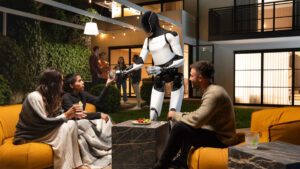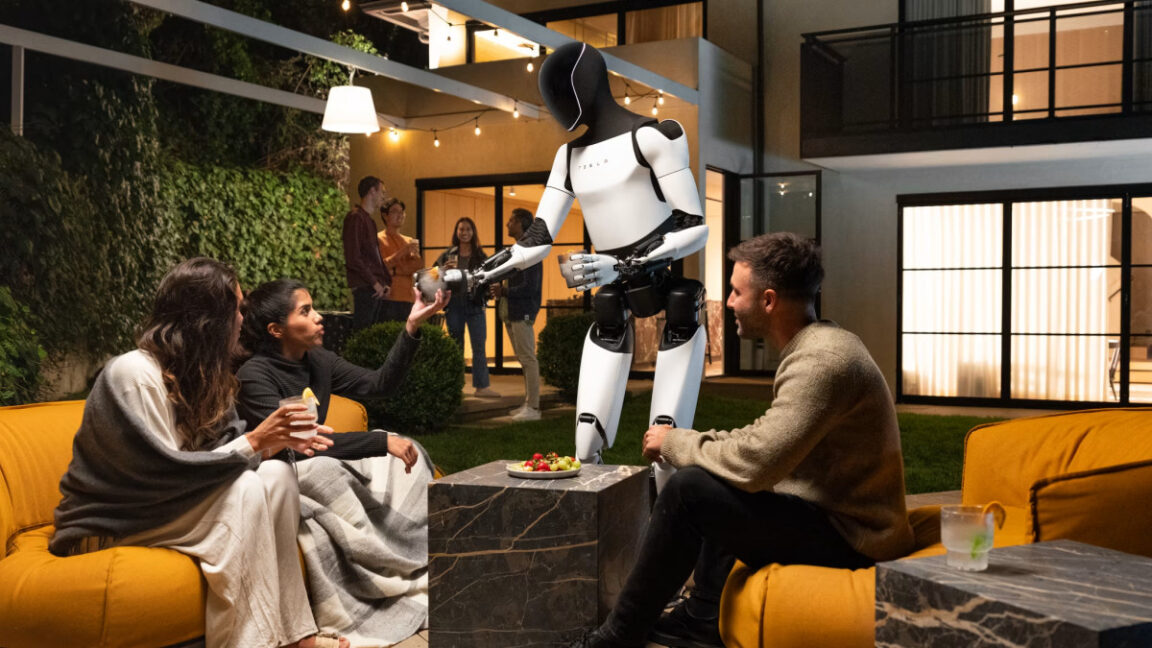After Elon Musk provided his "long-term" vision for autonomous, humanoid robots at last week's "We, Robot" event, we expressed some skepticism about the autonomy of the Optimus prototypes sent out for a post-event mingle with the assembled, partying humans. Now, there's been a raft of confirmation that human teleoperators were indeed puppeting the robot prototypes for much of the night.
Bloomberg cites unnamed "people familiar with the matter" in reporting that Tesla "used humans to remotely control some capabilities" of the prototype robots at the event. The report doesn't specify which demonstrated capabilities needed that human assistance, but it points out that the robots "were able to walk without external control using artificial intelligence" (the lack of a similar AI call-out for any other robot actions that night seems telling).
That lines up with reporting from tech blogger Robert Scoble, who posted on social media that he had "talked with an engineer" who confirmed that "when it walked, that is AI running Optimus." For other tasks—like pouring drinks from a tap, playing Rock Paper Scissors, or chatting with nearby attendees—Scoble noted that "a human is remote assisting."
Elon Musk just unveiled the future with Tesla Optimus, Robotaxi, and Robovan.
Here are 10 wild demos:
1. Tesla Optimus – an autonomous assistant and humanoid companion. pic.twitter.com/wECg0COSpL
— Jack Anderson | AI (@Fetch_AINews) October 11, 2024
Social media video from the "We, Robot" event shows lines of Optimus robots slowly walking into the party without any apparent assistance. In the footage, though, the parade of Optimus prototypes only walks in a straight line and is given a very wide berth enforced by lines of Tesla minders.
Electrek reports that streamed video footage from the event shows Tesla minders holding some sort of signaling device as they hovered nearby the Optimus units. Electrek also notes that Morgan Stanley analyst Adam Jones mentioned the robot's human controllers in an investor note Friday morning.
"It is our understanding that these robots were not operating entirely autonomously—but relied on tele-ops (human intervention) so it was more a demonstration of degrees of freedom and agility," Jones wrote.




That's all fine.
Using teleoperation in the meantime makes for a cool demo, while the software gains features and matures. But JFC, be honest about what you're showing!
There should be no shame about a demo not being final features, about stuff not being ready. But you've got to be honest about what's "real", and what's a stand-in to help people imagine possibilities.